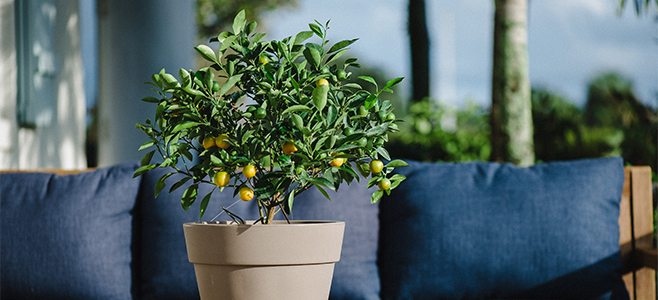
Citrus trees have a lot going for them – they’re beautiful to look at, smell great, and produce delicious, nutritious fruit that can be eaten fresh, added to your favorite recipes, or even used to make homemade cleaning and medicinal products. But before you start doing a search on “citrus trees for sale near me,” you should make sure the one you gets suits your taste – and the environment you can provide for it.
Indoors or out?
First of all, you need to know if you live in a climate that will support a citrus tree outdoors year-round, or if you need to choose from a variety of dwarf citrus trees can keep indoors part or all of the year.
Citrus trees have varying levels of frost tolerance, so it’s important to choose the type of citrus tree best suited to your climate. All citrus trees are frost-tender and are likely to be damaged by freezing temperatures. Because of this, citrus trees are usually grown in hardiness zones 9-11. Some very cold-hardy citrus or semi-citrus trees (like kumquat trees or Meyer lemon trees) will manage in zone 8 or even zone 7, but you’ll need to take special care to protect them when the temperature drops, because no citrus tree can survive in temperatures below 20 °F.
If you don’t live in growing zone 9-11, however, this doesn’t mean you have to miss out on growing your own citrus tree. Growing citrus in pots has become increasingly popular in recent years, and the wide variety of dwarf and semi-dwarf citrus trees for sale online makes it easier than ever to find the right tree for you.
The best thing about keeping a small citrus tree in a container is its maneuverability – you can keep your tree outdoors on your patio when the weather is warm but move it indoors when colder temps are predicted. With a little extra care, its even possible to keep a dwarf citrus tree indoors year-round.
Which tree is right for you?
Before purchasing a citrus tree online, you should first consider what’s most important to you: the fruit or the appearance of the tree itself? Many people grow citrus trees (which are evergreen) as ornamentals for their indoor or outdoor gardens, and while they’re all picturesque in their own way, their appearance can vary widely; for instance, some citrus trees are short and bushy (like lemon and lime trees) while others are tall and slim (like orange and grapefruit trees). Regular pruning can help shape a citrus tree the way you like.
If you love the smell of flowering citrus trees, keep in mind that, while all citrus trees flower, some don’t have an aroma. If fragrance is important to you, you’ll be better off with lemon, lime or orange trees, in which the fresh, citrus-y smell is not only pungent in the fruit and flowers, but the leaves as well.
Which type of fruit do you want?
Some citrus trees (like the Meyer lemon or certain varieties of tangerine) produce fruit all year round, while others (like grapefruit) produce a large harvest over a short period of time. Hybrid citrus trees even let you grow more than one citrus fruit on the same tree.
Some citrus fruits can be difficult to tell apart when still very young. When trying to determine which type of tree you’re considering, be sure to study the fruit carefully. The size and shape of the leaves can also provide clues to the type of tree you’re looking at.
Here are a few things to keep in mind about the most popular citrus trees:
- Lemon trees usually have dark green leaves with light green undersides; the leaves tend to have fine-tooth edges, are elliptical in shape, and grow close together. The fruit is oval, anywhere from 2-4 inches long, and bright yellow when ripe.
- Orange and tangerine tree leaves are very dark green and glossy, with a rounded base. Oranges are larger than tangerines, have thick, bumpy rinds and are bright orange in color.
- Lime trees have leaves similar to that of a lemon tree, but longer and shinier. The leaves on a lime tree also grow more separately. The bright-green fruit looks similar to that of an unripe lemon, but limes are only 1-2 inches in diameter (depending on the variety).
- Grapefruit tree leaves are also very shiny, and quite large (3-5 inches long) with round bases and pointed tips. The fruit grows clumped together (giving the fruit its name) and ranged in color from pale yellow to pink. Grapefruit is the largest citrus fruit at 4 inches in diameter.

